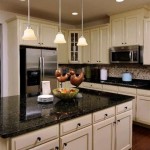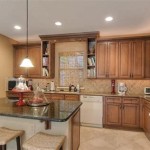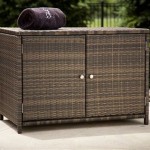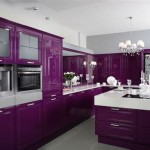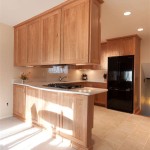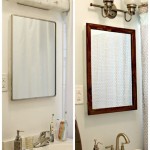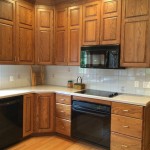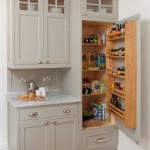The Perfect Tool Chest Side Cabinet For Any Craftsmanship Company
A well-organized workspace is fundamental to the success of any craftsmanship company. It fosters efficiency, reduces time wasted searching for tools, and ultimately contributes to the quality of the final product. A cornerstone of effective organization in any shop is the tool chest, and expanding its capabilities with a side cabinet can significantly enhance storage and accessibility. Choosing the "perfect" side cabinet requires careful consideration of several factors to ensure it meets the specific needs of the company and its craftspeople.
This article explores the key considerations when selecting a tool chest side cabinet, examining various features, materials, and configurations. It aims to provide a comprehensive guide for craftsmanship companies seeking to optimize their tool storage and enhance their overall workflow.
Understanding the Need: Assessing Storage Requirements
The first step in selecting a tool chest side cabinet is to conduct a thorough assessment of the company's storage requirements. This involves cataloging the existing tool inventory, identifying any current storage shortages, and projecting future needs. Consider the size and type of tools that need to be stored, as well as the frequency with which they are used. Are there specialty tools that require specific types of compartments or drawers? Does the company anticipate acquiring new tools in the near future that will require additional storage space?
Evaluating the existing tool chest is also crucial. Determine its current capacity and identify any areas where it falls short. Does it lack sufficient drawer space for smaller tools? Is there inadequate vertical storage for larger items? By understanding the limitations of the current setup, a company can more effectively identify the features and capabilities required of a side cabinet.
Furthermore, consider the organization style preferred by the craftspeople. Some prefer a compartmentalized system with individual drawers for specific tool types, while others prefer a more open configuration with larger drawers that can accommodate a wider variety of tools. Understanding these preferences can help guide the selection of a side cabinet with the appropriate drawer configurations and layouts.
Finally, consider any specific environmental factors that may influence storage needs. For example, a company operating in a humid environment may require a side cabinet with added protection against moisture to prevent rust and corrosion on tools. A company working with sensitive materials may need a cabinet with features to minimize dust and contamination.
Key Features and Considerations
Once the storage requirements have been assessed, it's time to examine the key features and considerations that will influence the selection of a side cabinet. These include material, construction, drawer configuration, locking mechanisms, and mobility.
Material and Construction: The material used in the construction of a side cabinet will significantly impact its durability, weight capacity, and resistance to wear and tear. Steel is the most common material, offering a good balance of strength and affordability. However, the gauge of the steel is a critical factor. Thicker gauge steel provides greater strength and durability, making it more suitable for heavy-duty applications. Stainless steel is a more expensive option but offers superior corrosion resistance, making it ideal for environments with high humidity or exposure to chemicals.
The construction of the side cabinet is equally important. Look for cabinets with fully welded seams and reinforced corners, as these features will enhance their structural integrity and prevent warping or bending under heavy loads. The cabinet should also be designed to withstand the rigors of a busy workshop environment, including impacts, vibrations, and exposure to dust and debris.
Drawer Configuration and Capacity: The drawer configuration of a side cabinet should be carefully considered to match the specific storage needs of the company. Different drawer sizes and depths are ideal for different types of tools. Smaller, shallower drawers are well-suited for storing small hand tools, fasteners, and measuring instruments. Larger, deeper drawers can accommodate power tools, bulky equipment, and supplies.
The weight capacity of each drawer is also a critical factor. Ensure that the drawers are rated to support the weight of the tools they will be storing. Overloading drawers can lead to premature wear and tear, and in some cases, even damage to the cabinet itself. Consider the drawer slides as well. Ball-bearing slides provide smooth and reliable operation, even when the drawer is fully loaded. Look for slides that are rated for heavy-duty use and feature a full-extension design for easy access to all contents.
Locking Mechanisms and Security: Security is an important consideration, especially in workshops where valuable tools are stored. A robust locking mechanism is essential to prevent theft and unauthorized access. Central locking systems that secure all drawers with a single key are common and convenient. Consider models with tubular locks, which offer higher security than traditional pin tumbler locks. Some side cabinets may also offer the option to install combination locks or electronic locks for added security.
Mobility: While not always necessary, mobility can be a valuable feature for a side cabinet, especially in larger workshops where tools need to be moved around frequently. Side cabinets with heavy-duty casters can be easily moved from one workstation to another, providing convenient access to tools wherever they are needed. Look for casters with a high weight capacity and a locking mechanism to prevent the cabinet from rolling unintentionally. The casters should also be made of a durable material that can withstand the rigors of a workshop environment.
Consider the overall size and footprint of the side cabinet in relation to the available workspace. Ensure that the cabinet will fit comfortably alongside the existing tool chest and will not obstruct walkways or other work areas. Measure the available space carefully before making a purchase.
Exploring Additional Features and Options
Beyond the core features discussed above, there are several additional features and options that can enhance the functionality and convenience of a tool chest side cabinet. These include power strips, work surfaces, and integrated lighting.
Power Strips and Electrical Outlets: Integrating a power strip or electrical outlets into the side cabinet can be a valuable convenience, providing a readily accessible source of power for power tools, chargers, and other electronic devices. Look for power strips with surge protection to protect sensitive equipment from power surges. The power strip should be securely mounted within the cabinet and feature a durable cord that can withstand the demands of a workshop environment.
Work Surfaces: Some side cabinets feature a built-in work surface on top, providing a convenient space for performing quick repairs, assembling small components, or reviewing blueprints. The work surface should be made of a durable material that can withstand scratches, dents, and spills. Stainless steel or coated steel are good options for work surfaces, as they are easy to clean and resistant to corrosion.
Integrated Lighting: Integrated lighting can significantly improve visibility within the side cabinet, making it easier to find tools and supplies. LED lighting is a popular choice, as it is energy-efficient, long-lasting, and provides bright, even illumination. The lighting should be strategically positioned to illuminate all drawers and compartments within the cabinet. Consider models with adjustable lighting to customize the brightness and direction of the light.
Drawer Liners: Drawer liners can help to protect the interior of the drawers from scratches, dents, and spills. They also provide a non-slip surface that prevents tools from sliding around during transport. Choose drawer liners made of a durable material that is resistant to wear and tear. Foam liners are a popular choice, as they provide good cushioning and can be easily cut to fit the drawers.
Customization Options: Some manufacturers offer customization options that allow companies to tailor the side cabinet to their specific needs. This may include custom drawer configurations, specialized compartments for specific tool types, or custom paint colors to match the company's branding. Consider these options if the standard models do not fully meet the company's requirements.
When selecting a tool chest side cabinet, it's imperative to carefully weigh the benefits of each feature against the cost. Determine which features are essential for the company's operations and which are merely "nice to have." Comparing prices from different manufacturers and suppliers can help to identify the best value for the investment.
Ultimately, the perfect tool chest side cabinet will depend on the specific needs and priorities of the craftsmanship company. By carefully assessing storage requirements, considering key features, and exploring additional options, companies can select a side cabinet that will enhance their workflow, improve organization, and contribute to the overall success of their operations.

New Craftsman Fully Featured 41 Tool Storage Chest And Rolling Cabinet

Every Major Tool Chest Brand Ranked Worst To Best

Tool Storage Chests Cabinets Craftsman

The Amazing Studley Tool Chest Rice House

New Craftsman Tool Storage Chests And Cabinets For 2024

Storage Cabinets And Chests Frequently Asked Questions Craftsman

Metalworking S Add Functionality To Snap On Tool Chest Aday
36 High Capacity Steel Storage Combo Milwaee Tool

Craftsman S Tool Chest Woodworking Project Woodsmith Plans

The Ultimate Tool Box Guide Artman
Related Posts

